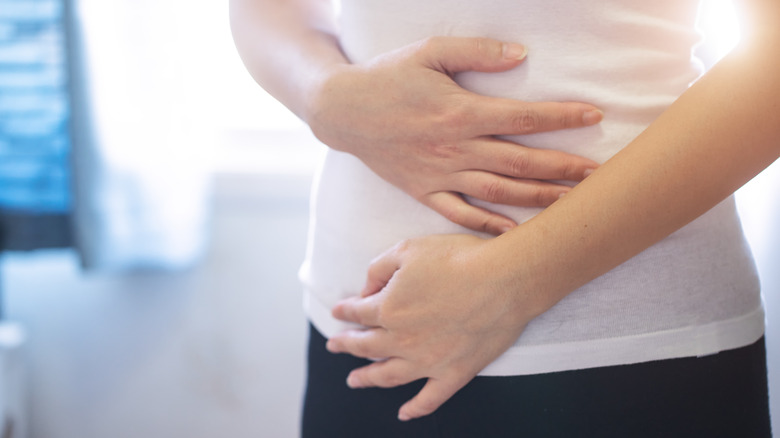The Real Reason Food Poisoning Can Give You A Fever
If you've ever been the victim of food poisoning, you know it's anything but an enjoyable experience. Food poisoning occurs when you consume a food or drink item contaminated with germs that make you sick within hours or even a few days after consumption (via Centers for Disease Control and Prevention).
You may have heard the names of some of these germs in food recall announcements: staph, vibrio, salmonella, norovirus, E. coli, and listeria. All have similar symptoms such as diarrhea, vomiting, and dehydration — just to name a few. But have you ever wondered how an illness like food poisoning can cause symptoms unrelated to your digestion, like a high fever?
The CDC defines a high fever as having an oral temperature over 102 degrees. Your body's natural temperature can range from 97.6 degrees to 99.6 degrees, but when your body is triggered by an infection, it produces a fever as a means to fight off the germs by making it too hot for the bacteria to survive (via Healthline).
When food poisoning is severe enough to see a doctor
The heightened temperature also causes the body's white blood cells to kick into gear. White blood cells are a necessity against fighting infection, and your body knows that. This increased production of white blood cells occurs automatically, which is why you may have a higher white blood cell count when you're sick (via Cleveland Clinic).
Even though having a fever can be uncomfortable, it's actually a good sign that your body is trying to fight the food-borne illness it has encountered. Most people typically have mild symptoms that subside after a few days, however, there are cases that are more severe and require immediate medical attention.
You should see a doctor if you develop bloody diarrhea, a fever of 102 degrees or higher, frequent vomiting, dehydration, or if your diarrhea lasts for more than three days, according to experts at the CDC.


